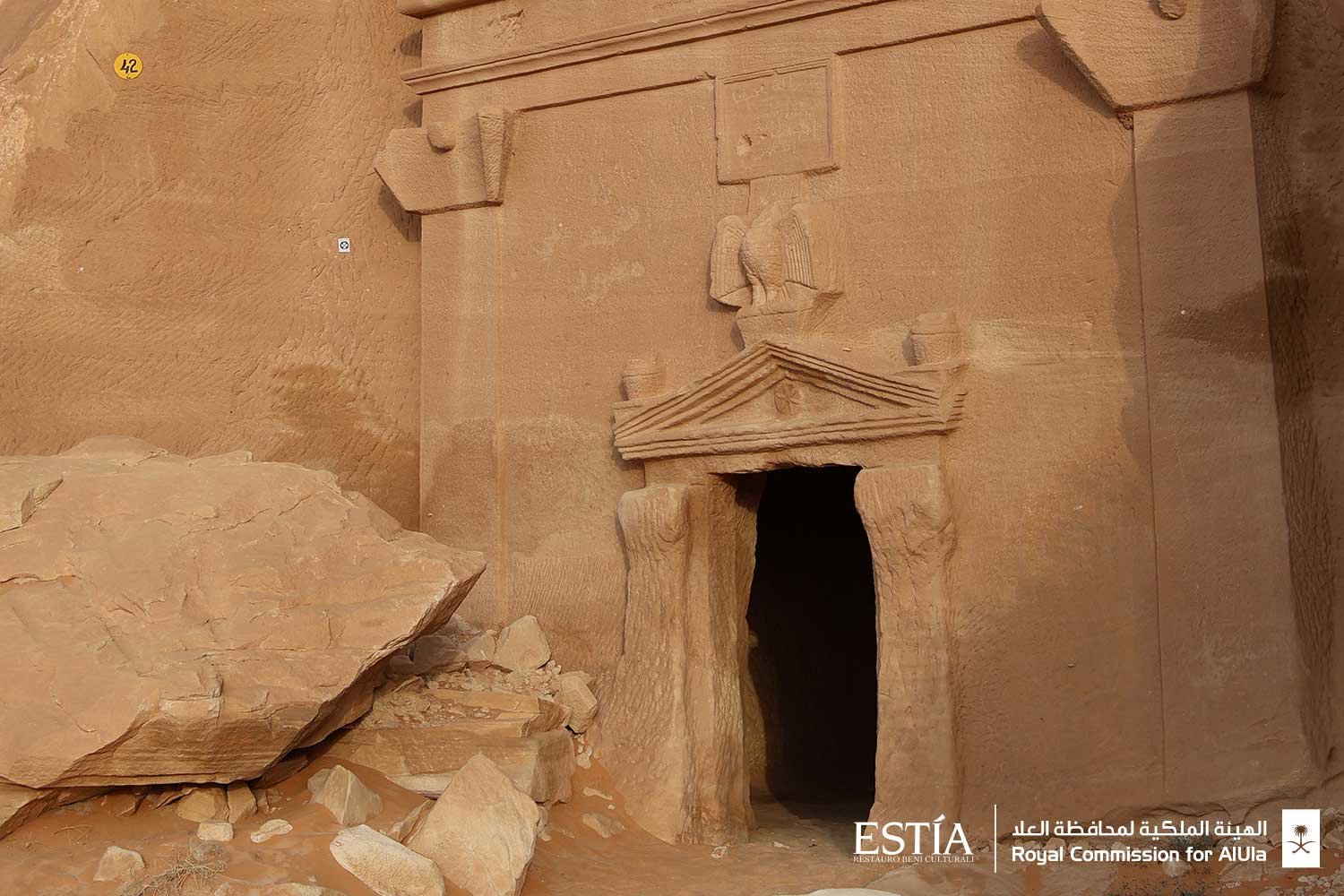
Tomb IGN42 belongs to the Proto-Hegra Type 2 tombs and shares many characteristics with Tomb IGN40, differing primarily in the orientation of its façade, which faces more to the south. The tomb is easily accessible as it is at ground level. The upper part of the façade features the typical half-crowsteps, with an Egyptian entablature below, composed of a cornice and architrave, and an Ionic entablature defined by a cornice and frieze. Two pilasters with Nabatean Corinthian capitals support the entablature, though the bases remain hidden due to a landslide on the left side. The entrance is surmounted by a pediment with a tympanum, an upper acroterion displaying an eagle, and two lateral acroterions adorned with decorated vases. The lower part of the pilasters was left incomplete.

Axe, Pick, Point chisel, Flat chisel, Tooth chisel
Sandstone, Mortar (underside of the entrance, perimeter of the burial niche and cells), Paint film (rosette in the tympanum)
Les tombeaux nabatéens de Hegra vol. II Nehmé L. Académie des inscriptions et belles-lettres Paris 2015 pp.87-88
The interior consists of a quadrangular burial chamber with two burial cells located to the left of the entrance and one burial niche on the left side wall. The walls and ceiling show evidence of workmanship with pick, point chisel, and axe. The floor is irregular, partly covered with sand and partly with a hard, compact soil-like material. Three recesses are visible on the underside of the entrance, suggesting the ancient presence of a door or closing element.